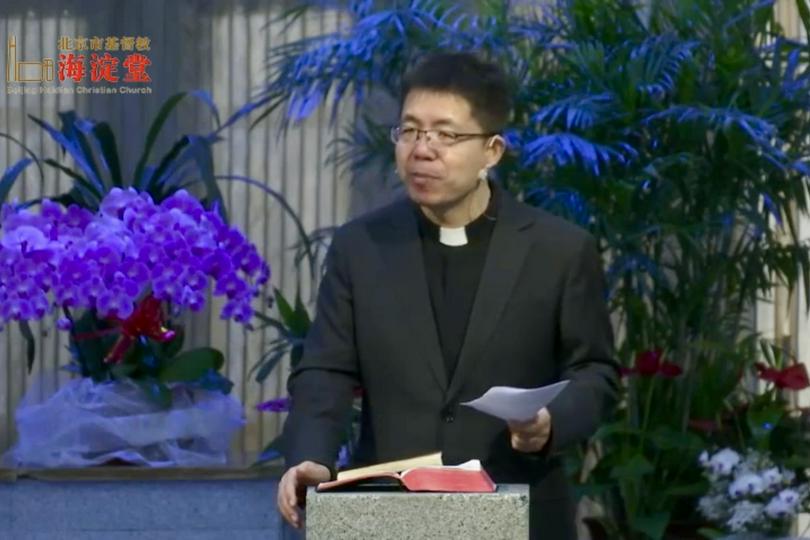Last Sunday, during Haidian Church's first Sunday worship service following the Spring Festival holiday, Rev. Han Zhanhui, a pastor of the church, delivered sermons on "The Wisdom of Service" during the second and third services.
On February 9, citing Colossians 4:7-9, Rev. Han examined Paul's introduction of the two messengers, Tychicus and Onesimus, who delivered letters to the Colossian church. He highlighted Paul's wisdom in ministry from three key perspectives.
Similarities and Differences
Pastor Han highlighted that both Tychicus and Onesimus had a close relationship with God and their fellow believers. However, while Onesimus was a Colossian, Tychicus was a senior minister. Their differences and shared qualities allowed them to work effectively together, making them well-suited to deliver Paul’s letter—demonstrating that "1+1 is greater than 2." To illustrate this, Pastor Han also used the example of the church choir, where members contribute in different ways—playing the piano or guitar and singing—emphasizing the importance of serving with both similarities and differences.
However, by recounting the teamwork of Paul and Barnabas, which once greatly contributed to the Church of Antioch for their similarities and differences but later raised disagreement over Mark, Han explained that effective collaboration among co-workers with similarities and differences must be aligned with the content of their service to achieve greater results with less effort.
Individual and Collective
From verse 7 to verse 9 in Colossians 4, Han explained how Paul introduced the messengers and the content of the letter to the Colossian church by expanding from an individual to the broader team—Tychicus was part of the team of Paul and Onesimus, while Paul’s ministry was part of a larger collective effort. Han emphasized, "An individual's role may be significant, but we must not overlook the larger framework that supports it. In serving God's house, we are able to do more in the church because of this broader foundation that continually uplifts and assists us."
Han further illustrated this principle through the stories of Moses and Elijah. He described how Moses, with Aaron continually holding up his hands, led the Israelites to victory against the Amalekites and how Elijah transitioned from working alone in his early ministry to focusing on cultivating disciples in his later years. From these examples, Han emphasized that when individuals integrate into a collective, they can have a greater impact and achieve greater growth in their service.
Form and Essence
Paul wrote this letter to reassure the Colossians by informing them about his situation, his team, and their dedication to the Colossian church. While sharing this information was the outward form, the true essence was comforting their hearts. Han urged the congregation to integrate both form and essence into their service.
Han reinforced the integration of form and essence through the story of Mary and Martha. While Mary sat quietly at Jesus’ feet listening to his teaching, Martha complained, but Jesus affirmed that Mary was seeking to understand God’s will. Later, the Bible records that Mary broke an alabaster jar and poured perfume on Jesus’ head. Han emphasized that because Mary grasped God’s will, she transformed her love for the Lord into tangible actions, showcasing her devotion to the Lord as both form and essence.
Han also recalled a Sunday worship service in January that combined preaching with a prayer meeting. Later, he received feedback from a sister whose father was sick and hospitalized. She shared, "After listening to the sermon on Sunday,I received healing and comfort during the prayer meeting." Han explained, "The sermon is the essence, while the prayer meeting is the form. When serving—even just preaching—embodies both form and essence, the Holy Spirit works powerfully in every believer."
Han concluded that wise service integrates both form and essence, requires individual and collective efforts, and embraces both similarities and differences. He also anticipated that the congregation’s service would be filled with God’s wisdom in the upcoming year.
Haidian Church originally started as a preaching station affiliated with the Congregational Church, with its first chapel built in 1933. At that time, the congregation numbered around 500 believers. The current building, with a constructed area of 4,000 square meters (0.99 acres), was inaugurated on May 31, 2007. Five services have been held every Sunday in this space since 2011.












